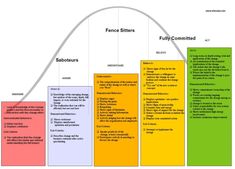Introduction
In today’s rapidly changing world, educational institutions need to adapt and evolve their curriculum to ensure students are prepared for future professional opportunities and challenges. This article explores the importance of managing curriculum change and discusses strategies for successfully implementing these changes, helping educators to secure their students’ success in a rapidly shifting professional landscape.
Embracing Change in Education
The process of updating and modifying a curriculum can be complex, but it is essential for learning institutions to stay relevant and meet the needs of their students. The global market demands workers who possess versatile skills adapted to emerging industries such as artificial intelligence, clean energy, and digital technology. Educators must embrace change not only because it’s necessary, but because it equips students with the skills they will require in the future.
Assessing the Current Curriculum
To make informed decisions about curricular changes, schools must first evaluate their existing curricula. This assessment should include identifying gaps, outdated content, or superfluous material that no longer serve any learning objectives. Gathering input from stakeholders such as teachers, students, parents, and industry experts can provide valuable insights into the strengths and weaknesses of current programs.
Developing a Vision for the Future
Once a thorough assessment has taken place, educational institutions should establish a vision for how they wish to evolve. This vision should outline clear goals related to desired student outcomes and align with key industry trends. By keeping abreast of emerging technologies and job markets predictions, schools can ensure their curricula remain responsive to and reflective of current professional contexts.
Building an Implementation Plan
Implementing curricular change requires careful planning to ensure it is both efficient and effective. A well-structured implementation plan should consider
1.Stakeholder engagement: Ensuring that stakeholders have opportunities to provide input on proposed changes helps create buy-in and facilitates smoother adoption.
2.Timeline: Establishing realistic timeframes for rolling out changes allows schools to allocate sufficient resources and support for a successful implementation process.
3.Professional development: Ensuring that educators are well-equipped with the necessary knowledge and skills to deliver the updated curriculum is crucial.
4.Communication: Clearly communicating reasons for changes, as well as expectations related to new content, can help students and stakeholders to understand and adapt their strategies
Monitoring Progress and Adapting
Change within an educational context is often iterative, requiring ongoing monitoring, evaluation, and adaptation to ensure effectiveness. Schools should establish processes for regular review of curricular changes in relation to their defined goals and objectives, making adjustments as needed based on student outcomes and feedback from stakeholders.
Conclusion
Managing curriculum change is a vital step in ensuring our students are well-equipped to face the challenges of an ever-evolving professional landscape. By staying responsive to emerging trends, developing a clear vision for the future, engaging with stakeholders, implementing structured plans for change, and continually evaluating progress, educational institutions can help mold the workers of tomorrow while also preparing them for success in their chosen careers.





